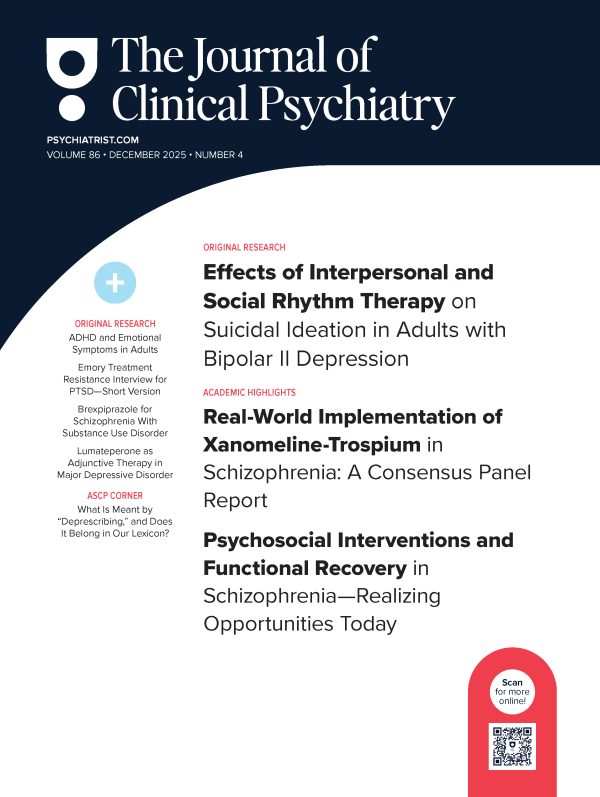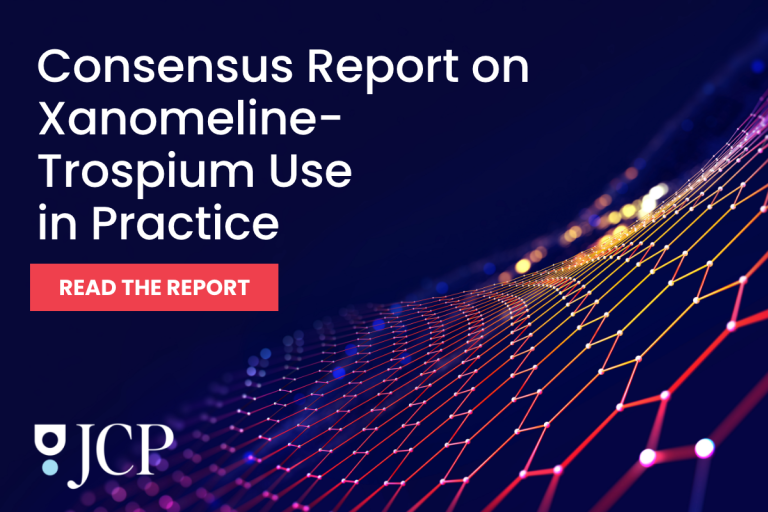
Abstract
Background: Distinguishing between primary and secondary mood disorders (illness-or substance-induced) is important for appropriate treatment, yet their prevalence and outcomes in the general population remain understudied.
Aim: To compare psychiatric and mental health outcomes between primary and secondary mood disorders over a 3-year follow-up.
Methods: We used longitudinal data from the National Epidemiologic Survey on Alcohol and Related Conditions (NESARC), a nationally representative survey of the US adult population (Wave 1, 2001–2002; Wave 2, 2004–2005). Primary and secondary mood disorders were assessed following DSM-IV criteria. Outcomes assessed 3 years later included recurrence and persistence of mood disorders, suicide attempt, mental and physical health–related quality of life, and mental health help-seeking behavior. All analyses were adjusted for a wide range of sociodemographic and clinical characteristics.
Results: Among 3,602 participants with mood disorders during the 12 months before Wave 1, 298 (8.3%) had secondary and 3,304 (91.7%) primary mood diagnoses. Following adjustments, secondary mood disorders were associated with significantly poorer physical health–related quality of life (β=−2.75; 95% CI, −4.27 to −1.23) and lower 3-year recurrence (adjusted odds ratio [AOR]=0.51; 95% CI, 0.36 to 0.72) and persistence rates (AOR=0.49; 95% CI, 0.31 to 0.79) compared to primary mood disorders. Other outcomes showed no significant differences (all P>.05).
Conclusion: Secondary mood disorders were not rare and associated with poorer physical health–related quality of life than primary mood disorders. However, both groups showed similar risks of suicide attempts, impaired mental health–related quality of life, and rates of mental health help-seeking behavior. The findings for adults with secondary mood disorders align with efforts to integrate physical and mental health care.
J Clin Psychiatry 2025;86(4):24m15765
Author affiliations are listed at the end of this article.
Members Only Content
This full article is available exclusively to Professional tier members. Subscribe now to unlock the HTML version and gain unlimited access to our entire library plus all PDFs. If you’re already a subscriber, please log in below to continue reading.
References (49)

- Grande I, Berk M, Birmaher B, et al. Bipolar disorder. Lancet. 2016;387(10027):1561–1572. PubMed CrossRef
- Kessler RC, Berglund P, Demler O, et al. The epidemiology of major depressive disorder: results from the National Comorbidity Survey Replication (NCS-R). JAMA. 2003;289(23):3095–3105. PubMed CrossRef
- Merikangas KR, Akiskal HS, Angst J, et al. Lifetime and 12-Month prevalence of bipolar spectrum disorder in the National Comorbidity Survey Replication. Arch Gen Psychiatry. 2007;64(5):543–552. PubMed CrossRef
- Solomon DA, Keller MB, Leon AC, et al. Multiple recurrences of major depressive disorder. Aust J Pharm. 2000;157(2):229–233. PubMed CrossRef
- Crump C, Sundquist K, Winkleby MA, et al. Comorbidities and mortality in bipolar disorder: a Swedish national cohort study. JAMA Psychiatry. 2013;70(9):931–939. PubMed CrossRef
- Cuijpers P, Smit F. Excess mortality in depression: a meta-analysis of community studies. J Affect Disord. 2002;72(3):227–236. PubMed CrossRef
- Andela CD, Van Haalen FM, Ragnarsson O, et al. Mechanisms in endocrinology: cushing’s syndrome causes irreversible effects on the human brain: a systematic review of structural and functional magnetic resonance imaging studies. Eur J Endocrinol. 2015;173(1):R1–R14. PubMed CrossRef
- Bode H, Ivens B, Bschor T, et al. Hyperthyroidism and clinical depression: a systematic review and meta-analysis. Transl Psychiatry. 2022;12(1):362. PubMed CrossRef
- Santos CO, Caeiro L, Ferro JM, et al. Mania and stroke: a systematic review. Cerebrovasc Dis. 2011;32(1):11–21. PubMed CrossRef
- Schwarz J, Odin P, Buhmann C, et al. Depression in Parkinson’s disease. J Neurol. 2011;258(S2):336–338.
- Carta MG, Moro MF, Lorefice L, et al. The risk of bipolar disorders in multiple sclerosis. J Affect Disord. 2014;155:255–260. PubMed CrossRef
- Meszaros ZS, Perl A, Faraone SV. Psychiatric symptoms in systemic lupus erythematosus: a systematic review. J Clin Psychiatry. 2012;73(7):993–1001. PubMed CrossRef
- Boden JM, Fergusson DM. Alcohol and depression. Addiction. 2011;106(5):906–914. PubMed CrossRef
- Fonseca F, Mestre-Pintó JI, Gómez-Gómez À, et al. The tryptophan system in cocaine-induced depression. JCM. 2020;9(12):4103. PubMed CrossRef
- Peet M, Peters S. Drug-induced Mania. Drug Saf. 1995;12(2):146–153. PubMed CrossRef
- Patten SB, Barbui C. Drug-Induced depression: a systematic review to inform clinical practice. Psychother Psychosom. 2004;73(4):207–215. PubMed CrossRef
- Loftis JM, Hauser P. The phenomenology and treatment of interferon-induced depression. J Affect Disord. 2004;82(2):175–190. PubMed CrossRef
- Bell V, Wilkinson S, Greco M, et al. What is the functional/organic distinction actually doing in psychiatry and neurology? Wellcome Open Res. 2020;5:138. PubMed CrossRef
- Harrison PJ. The neuropathology of primary mood disorder. Brain. 2002;125(Pt 7):1428–1449. PubMed CrossRef
- Grant BF, Stinson FS, Dawson DA, et al. Prevalence and co-occurrence of substance use disorders and independent mood and anxiety disorders: results from the National Epidemiologic Survey on Alcohol and Related Conditions. Arch Gen Psychiatry. 2004;61(8):807–816. PubMed CrossRef
- Blanco C, Alegría AA, Liu SM, et al. Differences among major depressive disorder with and without co-occurring substance use disorders and substance-induced depressive disorder: results from the National Epidemiologic Survey on Alcohol and Related Conditions. J Clin Psychiatry. 2012;73(6):865–873. PubMed CrossRef
- Magidson JF, Wang S, Lejuez CW, et al. Prospective study of substance-induced and independent major depressive disorder among individuals with substance use disorders in a nationally representative sample. Depress Anxiety. 2013;30(6):538–545. PubMed CrossRef
- Robinson RG, Bolduc PL, Price TR. Two-year longitudinal study of poststroke mood disorders: diagnosis and outcome at one and two years. Stroke. 1987;18(5):837–843. PubMed CrossRef
- Blanco C, Hoertel N, Wall MM, et al. Toward understanding sex differences in the prevalence of posttraumatic stress disorder: results from the National Epidemiologic Survey on Alcohol and Related Conditions. J Clin Psychiatry. 2018;79(2):16m11364. PubMed CrossRef
- Blanco C, Wall MM, Hoertel N, et al. Psychiatric disorders and risk for multiple adverse outcomes: a national prospective study. Mol Psychiatry. 2021;26(3):907–916. PubMed CrossRef
- Grant BF, Dawson DA, Stinson FS, et al. The Alcohol Use Disorder and Associated Disabilities Interview Schedule-IV (AUDADIS-IV): reliability of alcohol consumption, tobacco use, family history of depression and psychiatric diagnostic modules in a general population sample. Drug Alcohol Depend. 2003;71(1):7–16. PubMed CrossRef
- Hoertel N, Franco S, Wall MM, et al. Mental disorders and risk of suicide attempt: a national prospective study. Mol Psychiatry. 2015;20(6):718–726. PubMed CrossRef
- Blanco C, Hasin DS, Wall MM, et al. Cannabis use and risk of psychiatric disorders: prospective evidence from a US national longitudinal study. JAMA Psychiatry. 2016;73(4):388–395. PubMed CrossRef
- Canino G, Bravo M, Ramírez R, et al. The Spanish Alcohol Use Disorder and Associated Disabilities Interview Schedule (AUDADIS): reliability and concordance with clinical diagnoses in a Hispanic population. J Stud Alcohol. 1999;60(6):790–799. PubMed CrossRef
- Cottler LB, Grant BF, Blaine J, et al. Concordance of DSM-IV alcohol and drug use disorder criteria and diagnoses as measured by AUDADIS-ADR, CIDI and SCAN. Drug Alcohol Depend. 1997;47(3):195–205. PubMed CrossRef
- Grant B, Harford TC, Dawson DA, et al. The Alcohol Use Disorder and Associated Disabilities Interview Schedule (AUDADIS): reliability of alcohol and drug modules in a general population sample. Drug Alcohol Depend. 1995;39(1):37–44. PubMed CrossRef
- Ruan WJ, Goldstein RB, Chou SP, et al. The Alcohol Use Disorder and Associated Disabilities Interview Schedule-IV (AUDADIS-IV): reliability of new psychiatric diagnostic modules and risk factors in a general population sample. Drug Alcohol Depend. 2008;92(1-3):27–36. PubMed CrossRef
- American Psychiatric Association. Diagnostic and Statistical Manual of Mental Disorders. 5th ed. American Psychiatric Association;2013.
- National Institute on Alcohol Abuse and Alcoholism. National Epidemiologic Survey on Alcohol and Related Conditions-III (NESARC-III): Data Notes. National Institute on Alcohol Abuse and Alcoholism;2014.
- Robins LN, Helzer JE, Croughan J, et al. National Institute of Mental Health Diagnostic Interview Schedule: its history, characteristics, and validity. Arch Gen Psychiatry. 1981;38(4):381–389. PubMed CrossRef
- Lumley T. Analysis of complex survey samples. J Stat Soft. 2004;9(8):1–19. CrossRef
- Foulds JA, Douglas Sellman J, Adamson SJ, et al. Depression outcome in alcohol dependent patients: an evaluation of the role of independent and substance-induced depression and other predictors. J Affect Disord. 2015;174:503–510. PubMed CrossRef
- Myrick H, Cluver J, Swavely S, et al. Diagnosis and treatment of co-occurring affective disorders and substance use disorders. Psychiatr Clin North Am. 2004;27(4):649–659. PubMed CrossRef
- Parks KA, Parks CG, Onwuameze OE, et al. Psychiatric complications of primary hyperparathyroidism and mild hypercalcemia. Aust J Pharm. 2017;174(7):620–622. PubMed CrossRef
- Gallagher C, Radmall Z, O’Gara C, et al. Anxiety and depression among patients with alcohol dependence: co-morbid or substance-related problems? Ir J Psychol Med. 2018;35(2):121–126. PubMed CrossRef
- Brown SA, Inaba RK, Gillin JC, et al. Alcoholism and affective disorder: clinical course of depressive symptoms. Am J Psychiatry. 1995;152(1):45–52. PubMed CrossRef
- MacLean J, Kinley DJ, Jacobi F, et al. The relationship between physical conditions and suicidal behavior among those with mood disorders. J Affect Disord. 2011;130(1–2):245–250. PubMed CrossRef
- Goodwin RD, Kroenke K, Hoven CW, et al. Major depression, physical illness, and suicidal ideation in primary care. Psychosom Med. 2003;65(4):501–505. PubMed CrossRef
- Qin P, Webb R, Kapur N, et al. Hospitalization for physical illness and risk of subsequent suicide: a population study. J Intern Med. 2013;273(1):48–58. PubMed CrossRef
- Doherty AM, Gaughran F. The interface of physical and mental health. Soc Psychiatry Psychiatr Epidemiol. 2014;49(5):673–682. PubMed CrossRef
- Uga A, Kulkarni S, Heeramun V, et al. Evaluation of a model of integrated care for patients with chronic medical and psychiatric illness. Psychosomatics. 2017;58(4):437–440. PubMed CrossRef
- Van Eck Van Der Sluijs JF, Castelijns H, Eijsbroek V, et al. Illness burden and physical outcomes associated with collaborative care in patients with comorbid depressive disorder in chronic medical conditions: a systematic review and meta-analysis. Gen Hosp Psychiatry. 2018;50:1–14. PubMed CrossRef
- Kodl MM, Fu SS, Willenbring ML, et al. The impact of depressive symptoms on alcohol and cigarette consumption following treatment for alcohol and nicotine dependence. Alcohol Clin Exp Res. 2008;32(1):92–99. PubMed CrossRef
- Gold SM, Köhler-Forsberg O, Moss-Morris R, et al. Comorbid depression in medical diseases. Nat Rev Dis Primers. 2020;6(1):69. PubMed CrossRef





